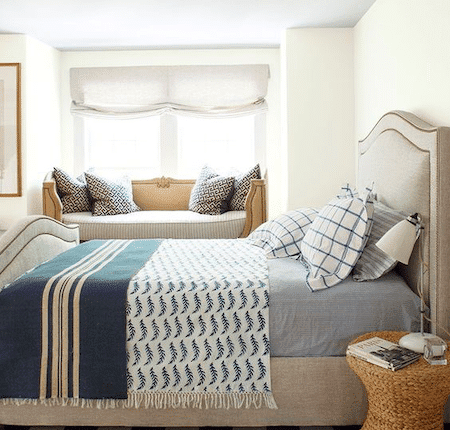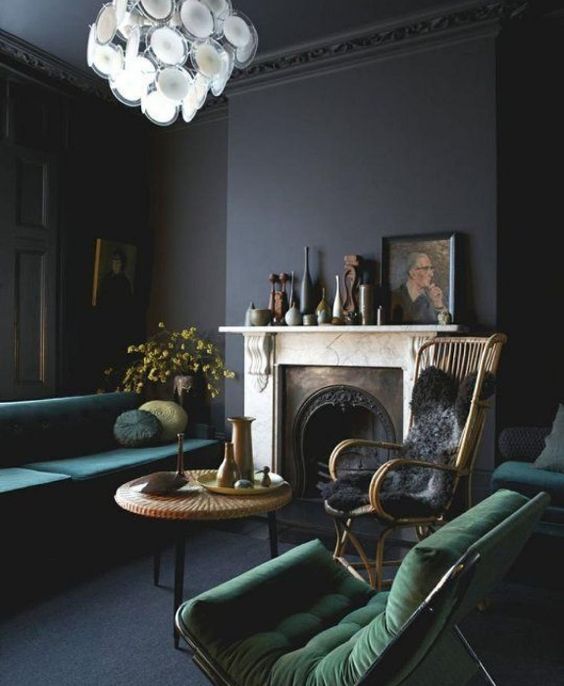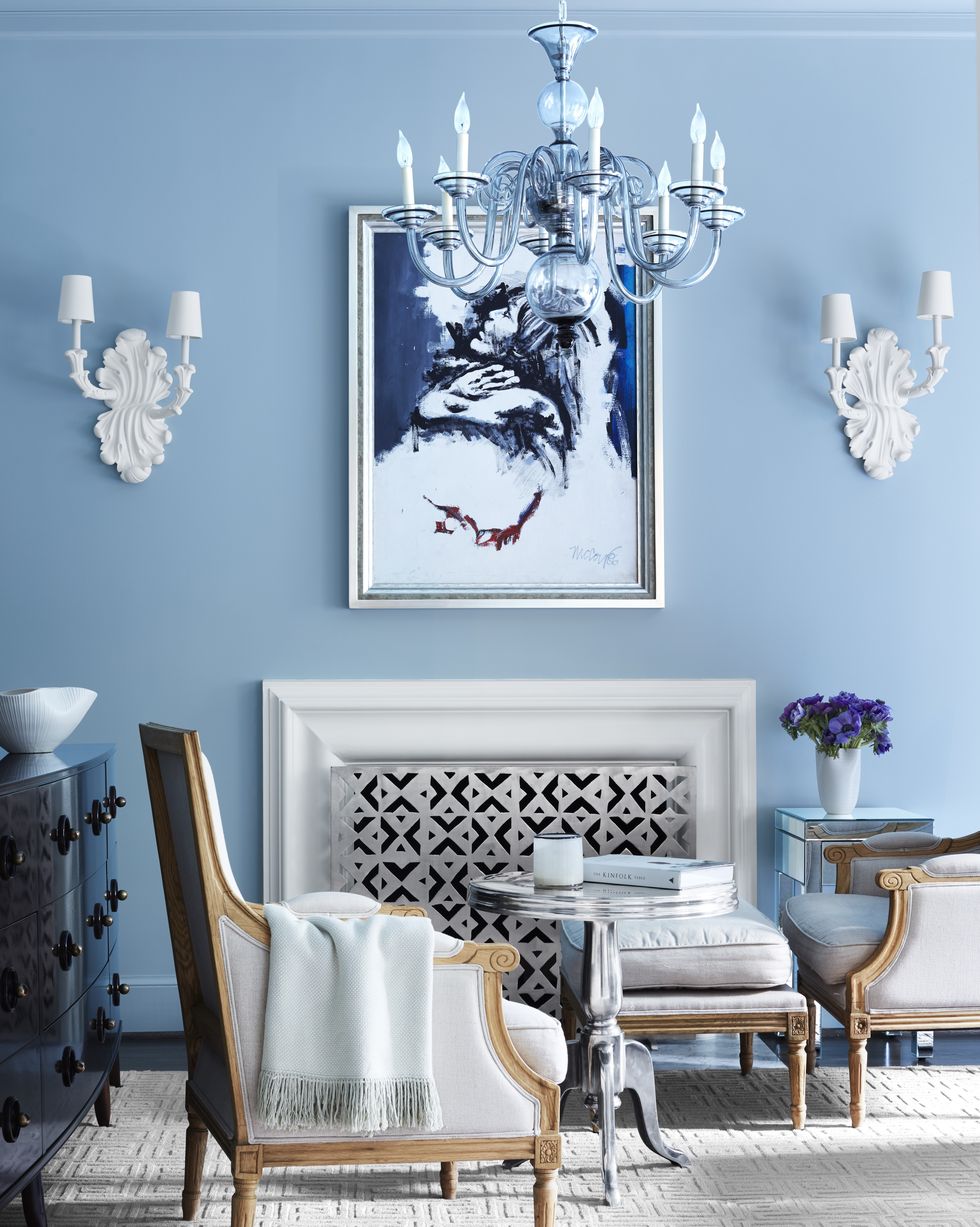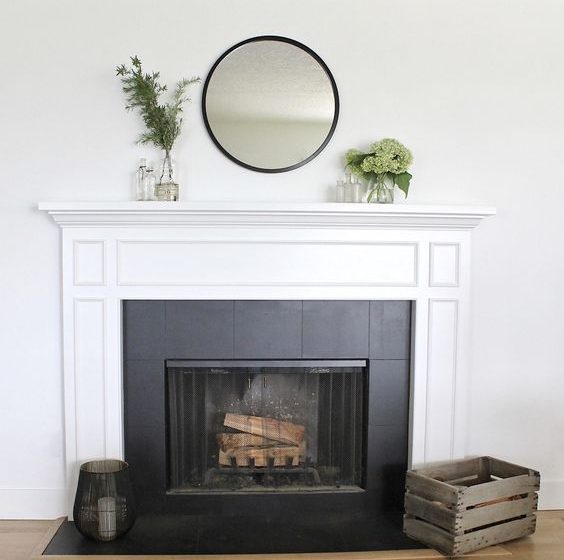
- Marvin
- /
Choosing the right paint colour is like putting on a new pair of glasses: it can help you see your room in a whole new light. Colour is indeed a powerful design tool in any room, and paint is one of the easiest and most versatile ways to use it. The right paint colour can help to disguise a room’s quirks or even accentuate its best features.
So whether you are hiring house painting services or DIY. Here’s how to choose the right paint colour to spruce up a room’s appearance:
How To Pick Paint for a Room That’s Too Small?

Photo courtesy of Benjamin Moore
When choosing paint for a small room, it’s essential to keep in mind how the colour will affect the appearance of the space.
Light colours reflect more light and can make a room feel larger. For example, bright white paint will make a room feel more open and airy.
If you want to make a small room appear larger, stick to light colours such as whites, creams, beiges, pastels, or cool colours.
In their study, German psychologists Oberfield and Hecht supported this theory that “light equals height.” For example, they found that when a ceiling is painted white, it creates an optical illusion that makes the room appear taller than when painted in a dark colour.
These colours move our eyes up and trick our brains into thinking the ceilings are higher.
How to use paint colour to make a room seem bigger:
- Use light colours. Light colours reflect more light and can make a room feel larger.
- Use the same colour throughout. Paint the ceilings, and walls, and trim the same colour to create a seamless look. You can also paint using closely related colours to create a cohesive look.
- Avoid using dark colours. Dark colours absorb light and can make a room feel smaller.
- Use high-gloss paint. High-gloss paint reflects light and can make a room feel brighter and more expansive.
- Use horizontal stripes. Stripes painted horizontally can give the illusion of a wider space.
- Use cool colours. Cool colours (blues, greens, and purples) recede and make a room feel larger.
- Use warm colours sparingly. Warm colours (reds, oranges, and yellows) can make a room feel smaller and cosier. Use them sparingly or as accents.
- Use monochromatic colours. Monochromatic colours are all variations of the same colour. This creates a cohesive look and can make a room feel larger.
- Use gradient colours. Gradient colours are two or more colours that blend seamlessly into each other. This can create an expansive feeling in a room.
- Use neutral colours. Neutrals are calming and can make a room feel more relaxed. They can also make a room feel larger.
- Use jewel tones. Jewel tones are rich, saturated colours that add depth and dimension to a space. When used sparingly, they can soften sharp corners and make a room feel larger.
- Use light-coloured window treatments. Light-coloured window treatments can make a room feel bright and open.
- Utilize horizontal and vertical stripes. Stripes create an illusion of space, making a room appear larger than it is. According to esteemed researcher von Helmholtz, perception of space is increased by linear elements such as stripes.
How To Pick Paint Colour for a Room That’s Too Large?

To make a large room feel more intimate and cosy, go for a warm or dark colour.
Deep hues absorb light, making the space feel smaller and more grounded. This can be especially helpful if you have high ceilings.
If the walls are a deep colour, but the trim is white, the contrast will be even more pronounced. As a result, the eye will pick up on the borders of the space more efficiently.
Homeowners can use this to create a feeling of cosiness by creating a more intimate space.
For a Room That Needs a Soothing Vibe

If your goal is to create a space that is calming and serene, there are certain hues that are more likely to achieve that effect.
Sky blue, for example, can help to evoke the feeling of gazing at the open sky on a clear day.
Sage grey is another popular choice for its deep, rich colour with a green undertone – it’s very zen.
Lilac is another good choice for a calming space – it’s been shown to reduce stress and promote relaxation.
And soft green is also often used in spaces where relaxation is the key objective. Studies show that cold colours such as green have a calming effect. By considering these and other calming colours, you can create a space that feels serene.
Highlight Special Features To Make Your Room Pop

One way to make a special feature in your room stand out is to paint it with a contrasting colour.
For example, if you have a white fireplace, you could paint the mantelpiece or surround it with a bold colour like black or red. Or if you have a black fireplace, you can do the opposite!
This will create a striking effect that will draw the eye to the fireplace. Alternatively, you could use white paint to highlight other features in your room. For example, you could paint moldings or doorframes white to create a clean and elegant look.
Or, you could use white paint to make small rooms appear larger and brighter. Whatever style you want to create, painting special features with contrasting colours is easy to jazz up your space.
How to Hide Something Ugly With Paint

When it comes to decorating a room, it is important to consider both the positive and negative aspects of the space.
If you want to hide the less than desirable elements of your room, do this by using a low-contrast palette. Unsightly radiators, for example, can be painted the same colour as the wall to make them less noticeable.
Or, you could use a dark colour to camouflage an unsightly electrical box. By using a low-contrast palette, you can make problem areas less noticeable and create a more cohesive look in your space.
Low-sheen or flat paint also helps to camouflage any imperfections in the walls or ceiling.
How to Create “Zones” and Continuity With Colour

When choosing paint colours for your home, it can be helpful to create colour zones. This can be a great way to define different areas of your home and add visual interest. To create colour zones, start by selecting a palette of muted, dustier colours.
Tami Ridgeway from Valspar recommends colours muted with a bit of gray (often found in historical palettes). These colours will flow better with one another and create a more cohesive look. Once you have your palette, decide which colours will go where.
For example, you might use one colour for the living room and another for the kitchen. Or you might choose to paint each bedroom a different colour. Whatever you decide, be sure to keep the overall design of your home in mind.
With a bit of planning, you can easily create stunning colour zones that add both style and function to your space.
How to Pick Paint Colours for Any Room
Here’s a video to help you choose the perfect colour:
Bonnie Krims, an architectural colour consultant, recommends you start with the existing objects in your home. Consider starting with the things in your home that you have a personal connection with.
For example, if you love mint green pillowcases and blankets, then use them as inspiration for your painting job!
Then, get your painting inspiration object and bring it to the paint store. Then select three strips of colours from that same piece as well!
So now you have 15+ more options for colour schemes that can be used on everything – including walls and furniture items alike. Lastly, choose one last accent shade – it will make all kinds of things come alive like never before!
How Do Paint Colours Evoke Feeling?
Paint colours can have a profound effect on our moods and emotions. Studies in colour psychology have shown that certain colours can evoke certain feelings.
For example, studies show that blue is often associated with feelings of calm, serenity, and security.
Likewise, blue can make customers feel safe. According to a study published in The Journal of Business Research, stores with a blue interior were significantly more likable to customers.
Red is proven to be associated with feelings of energy and excitement. Also, according to Hill and Barton, it can also improve physical performance.
Green is often associated with feelings of relaxation, peace, and harmony. According to Forbes Magazine, Green might work well in the bedroom to create a calming sleeping environment.
And yellow is often associated with feelings of happiness and optimism and overall brain stimulation. Therefore it might be worthwhile to consider yellow your office, study, or art studio to improve productivity and creativity.
As von Helmholz put it, “Colour is light playing on our senses.” By carefully choosing the right colours, we can create spaces that evoke the feelings we desire.
Play up the Architectural Colours
One way to add interest to any room is to play up the colours of the architecture. Paint can accent mouldings, doorways, and other architectural features to create a dramatic effect.
The Colour Marketing and Design Director at Sherwin-Williams recommends painting moulding or doorways on steps lighter (or darker) than their corresponding walls. For example, painting a doorway in a bold colour can help make it pop while adding a bright accent colour to mantels or bookcases can help to highlight their unique shape.
In addition, you can accent architectural features with paint, including windows, doors, wainscot, and arched doorways. By using paint colours to accentuate the parts of your home, you can create an exciting and unique space that is sure to impress guests.
How Do You Use Two Colours in the Same Room?
When painting a room, using two colours can create a dynamic and eye-catching look. However, it’s essential to use the colours wisely to avoid a clash.
Here are some tips for using two colours in the same room:
- Pick colours that are in the same family. For example, if you want to use blue and green, choose various shades to create a more unified look.
- Use one colour for the walls and the other for trim or accent pieces. This is an easy way to incorporate two colours without making the room feel too busy.
- Balance the colours evenly throughout the room. For example, if you’re using blue and green, make sure each colour appears about equally on all four walls. You don’t want one colour to dominate the space.
- Use light and dark shades of each colour. This will add interest and depth to the space. For example, you could use light blue on the walls and dark green on the trim.
Picking Paint Colour: Mistakes to Avoid
Picking paint colour is both an art and a science.
On one hand, you want to choose a colour that you love, and that will make your space look great. But on the other hand, there are a lot of factors to consider – from the size of the room to the amount of natural light it gets – that can impact how a colour looks once it’s on the walls.
To help you make the best decision possible, we’ve compiled a list of mistakes to avoid when picking a paint colour.
You’ll be one step closer to finding the perfect hue for your space by steering clear of these pitfalls.
Not Testing the Paint Colour
This is probably the most crucial tip on the list. Just because you love how a colour looks in the can or the store doesn’t mean it will look the same way in your home. The only way to know for sure is to test it out.
Paint a large swatch on the wall or invest in some small sample cans so you can try out the colour in different areas of the room. See how it looks at other times of day and in different light conditions. You might be surprised to find that a colour you thought you loved seems completely different in your home.
Not Considering the Size of the Room
The size of a room can have a big impact on how a paint colour looks. For example, a dark or bold colour might look great in a large room but feel overwhelming in a smaller space.
Conversely, light or neutral colour might seem bland in a large room but feel cosy and inviting in a smaller area.
When choosing a paint colour, it’s essential to consider the size of the room. If you’re not sure what colour will work best, ask for help from a professional painter or colour consultant. They can give you specific recommendations based on the size of your space.
Not Thinking About the Lighting
Lighting plays a significant role in how a paint colour looks in a room. A colour that looks great in a bright, sunny room might look washed out or dull in a room with less natural light.
When testing paint colours, be sure to look at them in the same lighting type in the room. For example, if the room doesn’t get a lot of natural light, you might want to consider choosing a paint colour with a little bit more depth or richness.
Not Considering the Colour of Your Furniture and Decor
The colour of your furniture and decor can impact the way a paint colour looks in your home. If you have a lot of dark-coloured furniture, light paint colour might make the room feel airy and spacious.
If you have a primarily neutral-coloured table, you might be able to get away with a more bold or unique paint colour.
When trying out paint colours, consider the other colours in the room. Consider how the paint colour will look with your furniture, rugs, and other decors.
Not Thinking About the Mood You Want To Create
Paint colours can have a significant impact on the mood of a room. Darker colours make a space feel more intimate and cosy, while lighter colours make a space feel more open and spacious.
When choosing a paint colour, think about the mood you want to create in the space. Do you want it to be a relaxing oasis or a lively gathering place? Once you have an idea of the mood you’re going for, you can narrow down your paint colour options.
Not Knowing When To Stop
It can be tempting to keep trying new paint colours until you find the perfect one. But sometimes, the best thing you can do is stop while you’re ahead.
If you’ve found a colour that you love and that works well in the space, don’t second-guess yourself. Instead, go ahead and commit to the colour. You can always repaint if you change your mind later.
For professional painting services, contact our team here at Newline Painting. We offer various painting services including interior and exterior house painting, fence painting, cabinet painting, and many others. We service Hobart, Canberra, Adelaide, Gold Coast, Sydney, Melbourne, Perth, Brisbane, and all across Australia.






